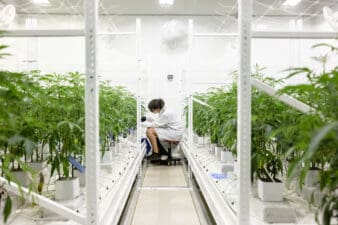Canopy Growth (TSX:WEED)(NYSE:WEED) lost 17% of its value in May.
There are two reasons investors fled its stock in the past month. One of them is a sector-wide problem and the other is specific to Canopy itself. Neither will likely be permanently scarring, but there could be further declines in June. Here’s why.
The first issue with investors is its announced multi-billion potential deal to buy New York-based Acreage Holdings for US$3.4 billion. Although there is a lot of support for the tie-up of the two companies, the deal will only happen if cannabis is legalized federally in the U.S. Until then, Acreage gets $300 million in a cash downpayment, and the two companies will share intelligence with each other as they continue to press Washington to move faster on legalization.
As I said, not everyone is happy about the deal. Fool contributor David Jagielski recently discussed the possibility that the deal could fall through.
Mercato Capital Management, which owns 2.7% of Acreage’s stock, believes that the company’s value, once cannabis is legalized, would be worth a lot more than the US$3.4 billion Canopy Growth is currently offering. Investors who hold Canopy Growth stock understand that CEO Bruce Linton’s arrangement is a smart way to get a foot in the door of the U.S. market without running afoul of U.S. laws and regulations.
However, if the June 19 vote fails to get enough shareholder support, Canopy Growth will be back at square one with other big players a little wiser to the company’s Trojan Horse solution. That could have consequences on the stock for some time after the vote is held.
The second thing weighing on Canopy Growth’s stock in May is the underwhelming earnings results of some cannabis producers combined with the fact that three of Canada’s largest pot producers — Aurora Cannabis, Tilray, and Cronos Group — all had good quarterly results on the top line.
Investors have no idea what Canopy Growth’s results will look like when it reports earnings June 20. Until then, WEED shares should remain in a downward trend.
Up almost 49% in 2019, investors still ought to be happy with its year-to-date performance.



